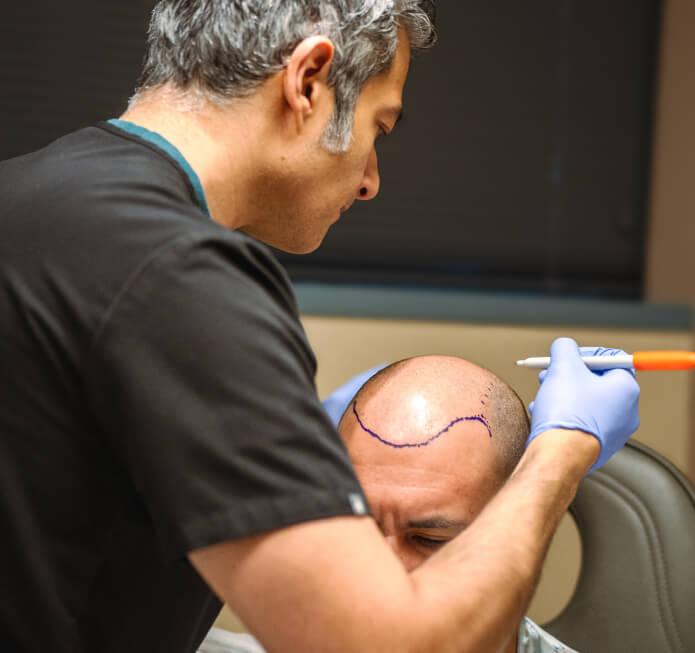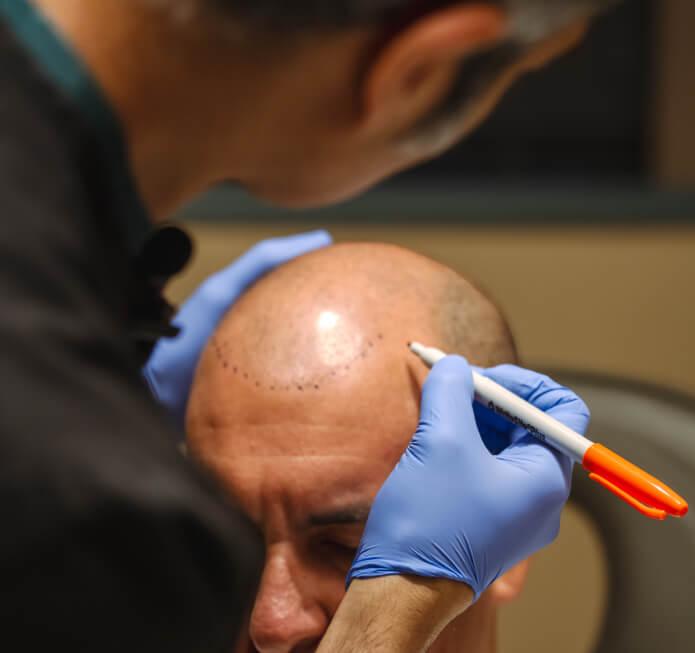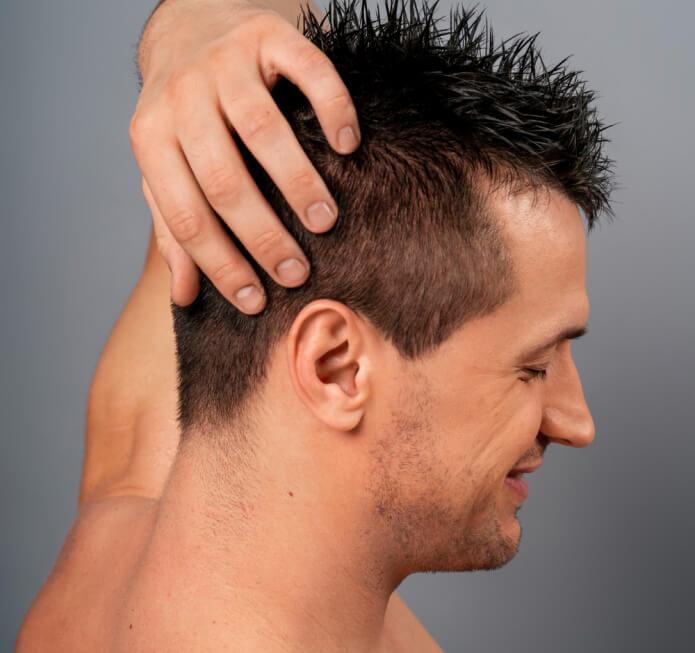Reasons for Revision Hair Transplant
There are various reasons someone may seek a revision hair transplant, including:
- Insufficient Hair Density: If the original transplant did not result in a sufficiently dense appearance, a revision can help add volume and thickness for a more natural look.
- Scarring from Previous Procedure: Some older hair transplant methods can leave noticeable scarring. FUE hair transplant revision can be particularly helpful in minimizing and concealing these scars.
- Uneven Hairline: Sometimes, the original hairline created during a transplant may look unnatural or asymmetrical. A revision can help redefine and reposition the hairline for improved facial harmony.
- Change in Aesthetic Preferences: Some patients may have received a hair transplant years ago and now desire a different style or density.
- Poor Graft Survival: Occasionally, grafts from the initial procedure may not survive, leading to sparse areas. A revision can help replace and reinforce these areas.
Benefits of a Hair Transplant Revision
A revision hair transplant can yield numerous benefits, including:
- Improved Aesthetic Outcome: Whether through increased density, refined hairline placement, or minimized scarring, a revision can create a more satisfying and natural look.
- Advanced Techniques: With the progression of transplant technology, newer methods such as FUE are more effective, offering precision and natural-looking results with minimal scarring.
- Enhanced Confidence: An improved hair appearance can lead to boosted self-esteem and a renewed sense of confidence.
- Minimal Downtime: With minimally invasive revision techniques, patients often experience shorter recovery periods and quicker results.
- Customized Solutions: Revision procedures are tailored to meet each patient’s unique goals and address specific concerns from their initial procedure.
Revision Hair Transplant Surgery
A revision hair transplant surgery can vary significantly depending on the patient’s needs and the issues presented by the initial procedure. During a consultation, Dr. Jonov evaluates the scalp’s condition, the quality of donor hair, and the desired outcome to determine the most suitable approach.
Types of Revision Techniques
Follicular Unit Extraction (FUE): One of the most commonly used techniques for revision, FUE involves extracting individual hair follicles from a donor area (usually the back of the scalp) and strategically implanting them in areas requiring enhancement. FUE is popular for revision procedures because it leaves minimal scarring and allows for precise placement, ideal for correcting density and hairline issues.
This process can also be partially automated and make use of technology that identifies healthy, quality hair follicles that have a higher chance of a successful transfer. Dr. Jonov still oversees the procedure. This can be an opportunity for people looking to revise their hair transplant results because robotic hair transplant is exceptionally precise and can promote more natural looking results.
Follicular Unit Transplantation (FUT): In some cases, FUT may be appropriate, especially if there is a need for a larger number of grafts or when working with limited donor hair. FUT involves removing a strip of skin with healthy hair follicles and dissecting them into grafts. While FUT can result in a linear scar, it may be concealed or minimized through careful placement.




